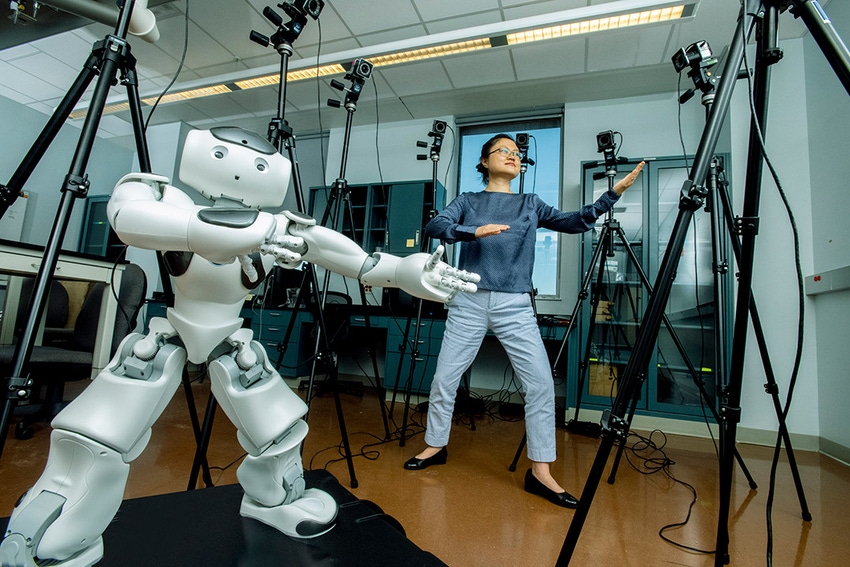
So, a heads up about a couple of new books on the way, a robot teaching Tai Chi and a seminar write up that’s worth a mention. This post actually makes me think, should be doing a newsletter? What do you think? Do you want one? Would you read it? Let me know!
XING YI NEWS
Dragon Body, Tiger Spirit
Byron Jacob has a new translation of the Xing Yi Classics, Dragon Body, Tiger Spirit, coming out, which looks like it will include a chapter on the history of Xing Yi written by Jarek Szymanski who you may know from his popular website China from inside.

This is looking like it’s going to be good. The title is a nice play on “Crouching Tiger, Hidden Dragon” and it refers to things mentioned in the Xing Yi Classics. The cover also features a nicely-colourised version of the only photo we have of the famous Xing Yi master Guo Yun Shen, which looks like it has been very nicely done. (Master Guo is the guy seated centre right, and wearing the light blue tunic, next to Master Che.)
There have been many books that contain the Xing Yi classics translated, of course, but I’m hoping that Byron’s commentary will be the thing that makes this one different.
“Dragon Body, Tiger Spirit” will be available in hardcover, softcover as well as digital versions. To be notified of release visit mushinmartialculture.com and sign up to the newsletter.”
I’ll do a review once I get my hands on a copy.
TAI CHI NEWS
The Yang Style Short Form
Another nicely presented book on my horizon is The Yang Style Short Form by Sifu Leo Ming and Carlone Addenbrooke. The short form in question is the Cheng Man-Ching Tai Chi form.
Here’s the description:
“A beginners guide to Taiji Chuan is a comprehensive training guide for all students of Taiji who are serious about mastering the art of Taiji. It is unique in that it details each of the forty four postures that make up the complete Yang Style Short Form, and it does so in a way that the student can experience the smallest nuance of each movement, from the opening sequence to the closing posture.”
It sounds interesting, especially since it goes on to say it will teach you how to breathe create correctly during your practice and how the “Tan Tien drives all movement, opening the meridians so that the universal llife [sic] force can flow through you. “
A spelling mistake in the description of the book on the website (“llife”) is a bit of a red flag, but that could be Barnes & Nobles fault, and nothing to do with the book. However, I’m curious about the use of “Taiji Chuan” as a Romanisation on the cover though, since it seems to mix both Pinyin and Wade-Giles Romanisation systems. I have genuinely never seen anybody mix the two quite like this before. It’s usually either “Tai Chi Chuan” or “Taijiquan”. This will upset some people, I’m sure, but I don’t mind.
I’ll be reviewing the book soon.
Robot Tai Chi
I guess it was inevitable, but somebody has made a life-size robot that teaches Tai Chi.

Depending on how it works (there’s no video!) this looks quite impressive, however, I’m left with one burning question – why? I don’t know how many thousands or millions of dollars it took to create this robot, but economically I’m pretty sure that paying Bob, your local Tai Chi teacher $50 to teach Tai Chi to the people in the old folks home once a week is a business model that is going to be hard for a multi-million dollar robot to beat. This looks like a solution in search of a problem to me.
Chen style seminar write up
Let me give a shout out to my friend Ken Gullette of Internal Fighting Arts for his write up of a recent seminar with Chen Tai Chi mastermind Nabil Ranne in Philadelphia. Here’s a quote:
“What impressed me most about Nabil’s teaching was the level of detail. And there were differences — in the shorter stances where feet are parallel most of the time, in the shifting of weight, in the awareness of different jin in each movement, the fullness of the dan t’ien and the coordination of the mingmen, the opening and closing of the chest and back, the folding of the chest and stomach, the closing power in the legs, the grounding from the heels, the stability of the knees and the spiraling through the feet, and connecting it all in each movement; and peng — always maintaining peng, which I have worked on for over two decades but still learn new aspects.”

Nabil teaches Tai Chi in the Chen Yu lineage, and to my eye seems by far the best of the teachers available if you want to follow that particular line of Chen style. Plus, you can learn with him online at the Chen Style Taijiquan Network
If you want to get a quick glimpse of his style of Tai Chi then check out this Instagram page.
MORE LINKS
Recent Tai Chi Notebook posts
Here are 3 things I wrote this week that you should read:
The power of connection with Henry Akins:
I came across this video recently of Henry Akins explaining the concept of connection in BJJ, as taught to him by Rickson Gracie, and it doesn’t half remind me of Tai Chi…
Way of the Warrior episode: Shorinji Kempo
The classic BBC TV series, Way of the Warrior’s episode on Shorinji Kempo just appeared online, and it still holds up today.
Where should the elbows be in Xing Yi?
This blog is about a weird quirk of the Xing Yi world. There’s a surprisingly large amount of online debate in Xing Yi circles about where the elbow should be when performing Xing Yi.






